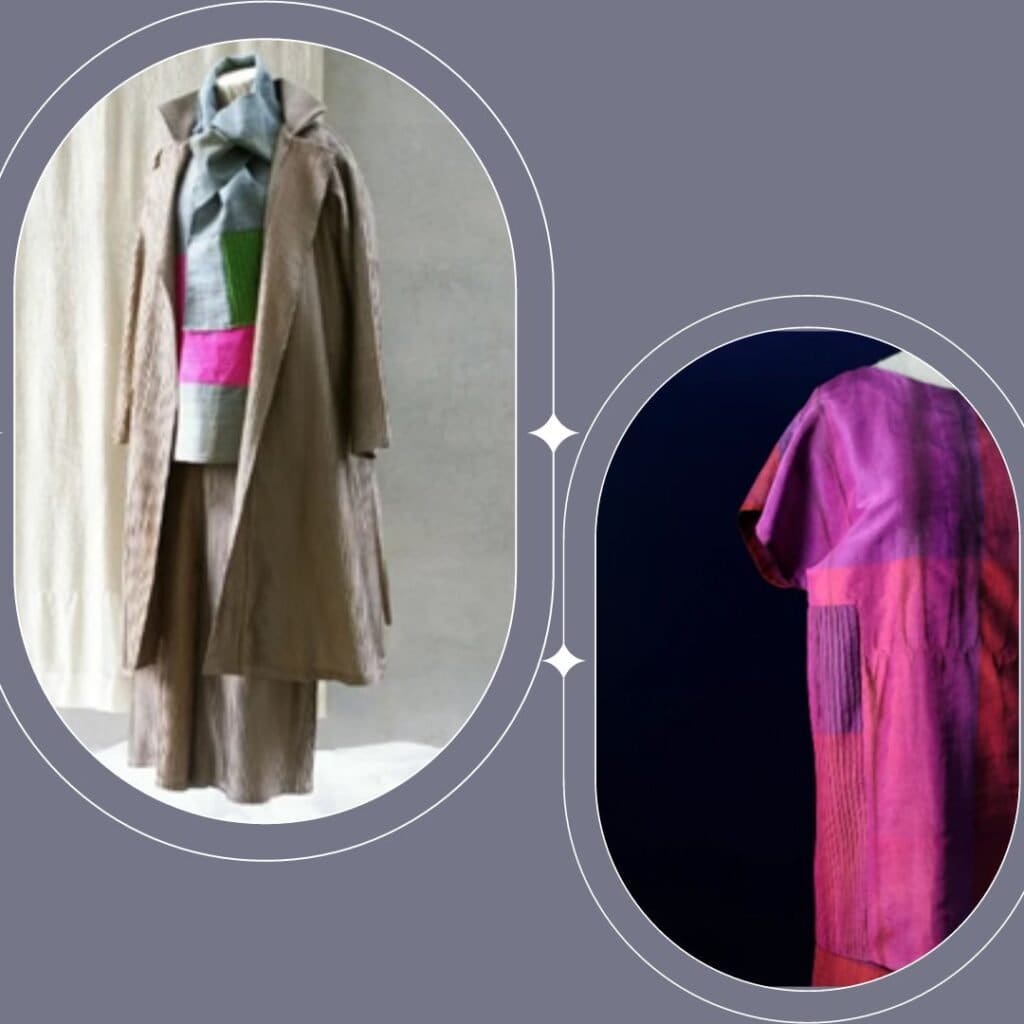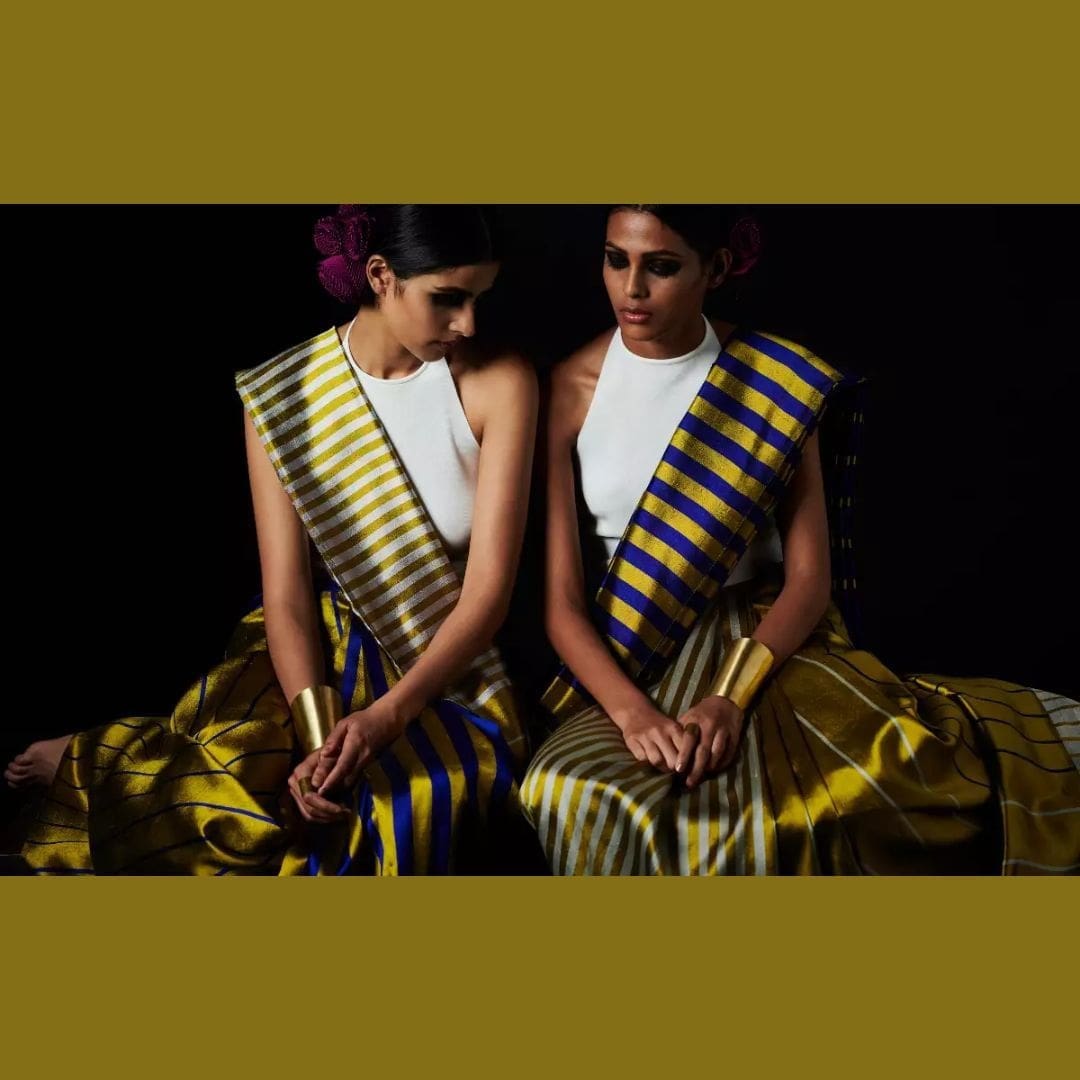I am a frequent visitor at various handloom and handloom related ventures for a variety of reasons.
Sometimes its to purchase something from there, sometimes it’s a site visit and sometimes it is a
professional visit. Through all these visits, one thing that always cringed me was the numbers these
artisans shared about the decline in their community members and clients. During one of my visits to
Yeola which is popular for Paithani, we came across a family that has been dyeing paithani yarns for
generations now. They claimed to be the only family left in Maharashtra that is into dyeing of silk yarns
used in Paithani. The reason behind this decline was majorly influence of western fashion that has
contributed to the decline in the demand for handloom. Pandemic has also greatly affected the
handloom business in the last couple of years.
The handloom sector, which employs over 4.3 million weavers and affiliated workers, is rural India’s
second largest employment after agriculture. Reflecting on its rich legacy, India has emerged as the sole commercial producer of handloom fabrics. India produces over 95% of the world’s handwoven fabric. While similar industries in other areas of the world have closed their doors, Indian handlooms have thrived due to its deeply ingrained principles. While there is a decline in the demand of Indian textiles in India itself, many collaborations between international designers and Indian craftspeople towards the revival of Indian textiles have occurred in recent years.
Several international design houses, like Burberry, Louis Vuitton, and Alberta Ferretti, have included Indian handloom into their collections during the last decade. From Burberry’s iconic trench coat refashioned in Maheshwari Silk to Louis Vuitton’s Banaras sari dresses with monogrammed flowers and Indian traditional motifs, these handloom enthusiasts are busy weaving a story of pride and beauty nestled in their unyielding reverence for all that is indigenous. At the heart of their love for handloom is a desire to resurrect many of these lost traditions, as well as a desire to assist Indian artisanal communities in their survival. I’m curious to learn more about the designers who are influenced by Indian handloom history. I was amazed by the list of designers who sourced fabric from a prominent hand block printing firm in Damar Gully, Mumbai, during one of my visits. The list includes not just prominent Indian designers, but also popular international designers such as Donna Karen, who travelled all the way to India to understand the art and source handcrafted fabric for her collection.
There are few more designers who graced the runway with Indian handlooms. Some of them are:
Louis Vuitton- Banarasi Brocade
Louis Vuitton, a French luxury fashion label, also experimented with Banaras silk weaves to produce
magnificent sari outfits for the brand’s Diwali collection in 2010. The brand employed a specially woven
‘Louis Vuitton fabric’ with a mix of monogrammed flowers and traditional Indian designs. Louis Vuitton
commissioned experienced craftspeople from India to weave the unique fabrics and weave the Louis
Vuitton logo into them for the collection. The window displays in all Louis Vuitton stores globally
included a set-up created in collaboration with Indian artist Rajeev Sethi. Columns of trunks, specifically
made and hand-painted in India on Banana fiber paper, glowed from the inside, spreading the message
of the Festival of Lights.

Ryoko Haraguchi
Japanese designer Ryoko Haraguchi, launched a collection in 2016, Haath Heart. Tunics, skirts, Kota silk
shawls, woolen shawls, coats, jackets, and pants were all part of the collection. The amazing color
combinations were created using gradation and Persimmon dyes. Dyed Yarn Hand Spun and Hand-
Woven Pure Silk Taffeta, Pure Silk Dupion This collection made extensive use of Kota Silk, Hand Spun and Hand Woven Katya Silk. Pintucks were employed in an innovative way to produce textures.

Burberry
For Vogue India’s Fiftyth Anniversary ‘Project Renaissance,’ the iconic Burberry trench coat was
recreated with Maheshwari Silk, often used in sarees, replacing the monotonous beige.

Marchesa
Marchesa frequently pays tribute to Indian materials and textiles in their designs, taking care not
to directly reproduce culturally significant silhouettes. Instead, they place South Asian prints and
patterns on western shapes, such as brocade and china silk in brilliant colours like pink, red,
and blue. The incorporation of traditional elements signifying provenance results in a whole new
look.
The navy-blue tulle draped over the gold sequined bodice of the garment is a lovely
reinterpretation of a sari. In their strapless saree cocktail dress, they have likewise mixed
culturally rich vintage silk with the playful elegance of a cocktail party.

Alberta Ferretti
Alberta Ferretti used a Kanchipuram silk saree as the focal point of an elegant ball gown,
“reinterpreting this magnificent fabric to realize something different from the traditional sari.”

DKNY
DKNY also used Bishnupur Baluchari silk in their fitted black gown, with Donna Karan
commenting, “The geometric red is so DKNY—vibrant, energetic, colourful.” It’s interesting to
take something customary and turn it into something absolutely unexpected.”

Some other designers/ design labels that have used Indian handlooms are:
Salvatore Ferragamo- Benarasi brocade
Tod’s- Kanchipuram silk
Itro- Kashmiri Jamewar and Gujarati Bandhani
Rodger Vivier- Assam Silk
Roberto Cavalli- Rajasthani Bandhani
Jimmy Choo- Banarasi Brocade
Are International Runways Being Glorified by Indian Handloom Heritage?
When we see Indian textiles on international runways, we feel both pleased and amazed as Indians.
However, as designers, we are aware that this is a rare occurrence. Designers typically employ Indian
handloom but alter the motifs or other aspects of the weave. The beauty of Indian textiles is in the
colors, weaves, and designs that convey a story. Yes! A designer can always explore, but in our pursuit of creativity, we sometimes overlook the value of what already exists. Obviously, there are many nations around the world that have a rich textile tradition, and there are several opportunities for designers to experiment. However, when we claim that India is the world’s largest manufacturer of handlooms, it is apparent that it supplies the most handloom products and employs the most people. To keep up with these figures, we also need high-quality consumers. To preserve this heritage, we must ensure that it is treasured. There are numerous Indian crafts that have the potential to be shown on international runways.
In contrast, Indian designers are working hard to revive Indian handloom history, and they are always
thriving to discover new methods to use handloom in everyday apparel. Ironically, we tend to focus on
the work of international designers while paying less attention to the Indian designers who are
responsible for the Indian handloom industry’s success. Let us make every effort to encourage and
promote these innovative soldiers. Let us promote handloom. When looking for international designers
who use Indian handloom in their work, you would have to search for hours, but the number of Indian
designers who are revitalizing handloom legacy is boundless….
– Kshipra Gadey, Fashion Design Faculty, INIFD Kothrud.

